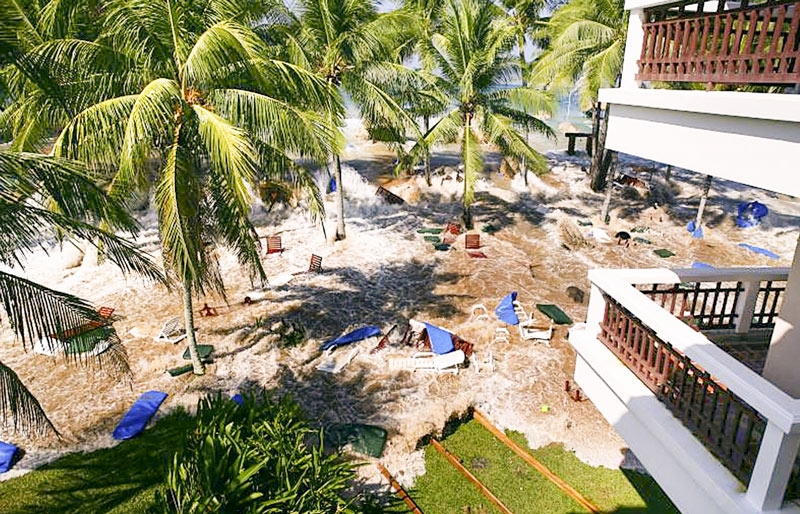Tsunamis for Tourists
I live far from the coast. Why should I care about tsunamis?
Have you ever gone to the beach for the day or for a vacation? You don’t need to be a coastal resident to be affected by a tsunami.
Don’t let your good sense go on vacation when you do!
Did you know?
- The 2004 Indian Ocean tsunami killed over 2,300 people vacationing or on business trips to Thailand and Sri Lanka.
- A magnitude 8.8 in February 2010 produced a major tsunami along the central Chilean coast. The earthquake occurred on the last summer holiday weekend. School evacuation drills andother coastal tsunami education programs reduced losses for coastal residents. Unfortunately, many inlanders knew little about tsunamis, and tourist casualties in campgrounds and other vacation spots were a bitter reminder that everyone who visits the beach needs to know what to do.

Helmut Issel was enjoying a vacation in Phuket, Thailand on December 26, 2004 when he heard a loud roar coming from the beach outside his hotel room. He was safe in his room, but others weren’t so lucky.
Watch The Impossible which documents the experiences of a vacationing family in Thailand during the 2004 Indian Ocean tsunami. It was based on the real ordeal of a Spanish family.
Plan to be safe when traveling:
- Always pay attention to your surroundings. Locate exits in buildings. Note the location of stairs in multistory buildings and consider counting the doors between your room and the exit.
- Ask hotel personnel what plans are in place in case of an emergency.
- Discuss with your traveling partners how you might get reconnected in case you are separated. Identify a landmark as an emergency meeting place.
- Keep a daypack with your most important documents and emergency items where you can easily grab it while exiting your hotel room.
- If you are on the coast, take a moment to figure out a route to high ground. Many beach areas have tsunami information posted. If there are no maps or signs, aim for areas 100 feet above sea level or two miles inland. If you can’t make it this far, go as far as you can. Every step up or inland can make a difference.
- When an earthquake strikes, DROP, COVER, and HOLD ON.
- Ground shaking is your most important warning that a tsunami may be on its way. The longer the shaking lasts, the more likely a tsunami will follow. Surges could arrive in minutes to tens of minutes.
- Tsunamis are tricky! The first surge won’t be the biggest and just when you think the danger is over, another big wave may arrive. The danger period may last for 12 hours or longer. Stay away from the coast until officials say it is safe to return.